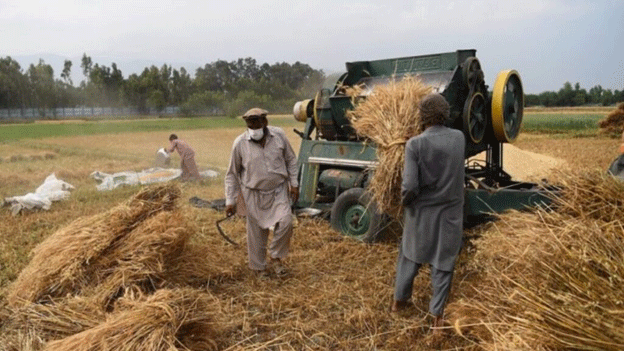Afghanistan’s Ministry of Agriculture, now under Taliban administration, has announced the successful conclusion of its wheat procurement program for the year. The initiative focused on purchasing surplus wheat from farmers, seed companies, and agricultural cooperatives across the country.
The program secured 38,000 metric tons of wheat, significantly contributing to Afghanistan’s strategic reserves, which play a crucial role in stabilizing the nation’s food supply amid ongoing challenges.
A Year of Growth in Wheat Production
According to the Taliban-run National Statistics and Information Authority, Afghanistan’s wheat production reached 4.8 million metric tons in 2024, marking a 10% increase compared to the previous year. This growth reflects resilience in the country’s agricultural sector, aided by favorable weather conditions and concerted efforts to enhance farming practices.
Key factors contributing to the production increase include:
- Improved Irrigation: Investments in irrigation systems have expanded arable land and improved crop yields.
- Favorable Weather: Stable rainfall during the growing season supported healthy wheat crops.
- Farmer Support Programs: Initiatives like seed distribution and training have helped farmers adopt better techniques.
Impact on Farmers and Food Security
The wheat procurement program has had multiple benefits for Afghanistan’s agricultural sector and food security:
- Support for Farmers: By purchasing surplus wheat, the government ensures farmers have a guaranteed market, boosting their income and reducing waste.
- Enhanced Strategic Reserves: Adding 38,000 metric tons to national reserves strengthens the country’s ability to manage food shortages and respond to emergencies.
- Progress Toward Self-Sufficiency: The increase in wheat production aligns with Afghanistan’s goal of reducing dependence on imports and achieving greater food self-reliance.
Challenges and Future Prospects
While the program represents a positive step, Afghanistan faces significant challenges in sustaining agricultural growth:
- Limited Infrastructure: Poor storage and transportation systems lead to post-harvest losses.
- Political and Economic Instability: Uncertain governance and lack of international recognition hinder access to agricultural funding and resources.
- Climate Risks: Dependency on favorable weather makes the sector vulnerable to droughts and floods.
Addressing these challenges will require increased investment in infrastructure, climate-resilient farming practices, and regional trade partnerships.
Afghanistan’s wheat procurement program and increased production figures highlight the resilience and potential of its agricultural sector. By supporting farmers and bolstering strategic reserves, the country takes an essential step toward food security. However, sustainable progress will depend on addressing infrastructure gaps and mitigating climate risks.
As Afghanistan navigates its path forward, strengthening agriculture remains critical for the nation’s stability and self-sufficiency.
Error





